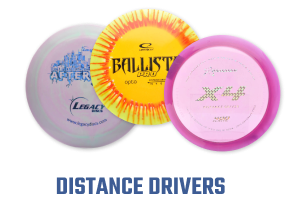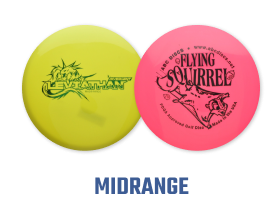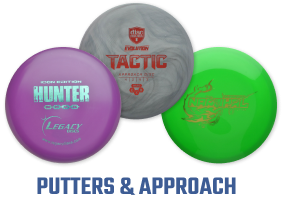
What does your mind conjure up when I say “field work?” Chances are it doesn’t bring much excitement. It is true, field work is the ugly duckling of disc golf. It can be an unglorified grind. But it doesn’t have to be. The truth is that field work is the absolute best place to grow your skills and become better at disc golf. Why? Because you are in complete control of HOW you get better. You are able to pick the shots you want to improve upon and then execute. Let’s take a look at the ways you can get the most benefit out of field work.
How to Approach Field Work
For starters, have a plan. I have seen too many people go out to a field and simply throw until their arm nearly falls off. Yes, this is still technically “field work.” But have you actually gotten better or learned anything? Take inventory of your skills or certain discs you would like to learn and pick a specific goal. This way your field work can build upon itself and one can see tangible progress. This contributes to confidence in competitive rounds as you have practiced specific shots and scenarios. Certain goals may include better mechanics for your forehand, learning a hyzer flip, throwing strictly fairway drivers, etc. Again, be honest with yourself and look for holes in your game. You want to make sure you are learning new skills and not just throwing shots you have already perfected.
There are two foundations of field work to bring to every session. The first is your mental game. Stay positive out there. Field work can be arduous because you are typically solo out in a field throwing similar shots over and over again. This is another reason why it is important to have a plan or it can easily become monotonous. Second, stay consistent with your mechanics. Field work sessions tend to tire you. Make sure you are using proper mechanics so you will gain consistency and be able to throw quality shots in competitive rounds when you are tired.
Getting to the Field
Alright, you have constructed a plan and brought way too many discs with you to the field. First thing is ALWAYS first; stretch. You are going to be throwing a lot of shots and exerting a lot of energy. Make sure you stretch out your entire body and not just your throwing shoulder. This is paramount as you will be throwing many more high exertion shots in your field work than you would in a typical round. Disc Golf Strong is a wonderful resource for specific stretching and training routines designed specifically for disc golfers.
Once your body and mind are prepared for field work it’s time to put in the work. No matter what your plan is, make sure to mix in throwing shots at less than 100% speed and at various angles. This will allow you to spend more time in the field and save energy. Another benefit is that you see how your discs react to various speeds and angles. This is extremely beneficial in competitive rounds for times when creativity is a must. Imagine being behind a massive oak tree where you must throw a technical line. Confidence is sure to creep in if you have thrown a multitude of angles and speeds in the field.
Target Practice
The best way to understand your consistency is to have a target. It can be anything from a pole to a tree or a certain dry patch of grass. Whatever the case may be, make sure you are throwing at a target. When no target is chosen and the expanse of the field is at hand, the mind has a tendency to become lackadaisical and tune out. This makes it easy for a field work session to become unproductive and monotonous. Pick something and throw at it.
And the bast target to use? An actual disc golf basket. I highly recommend buying a basket. Yes, they can be fairly expensive. But they turn field work into a much more enjoyable experience. All of a sudden your target has switched from a lamp post to an actual basket. And the biggest benefit? You get to putt whenever you’d like. My favorite field work sessions involve plenty of putting. I typically bookend my field work sessions with putting. This way I can slowly ease into my high exertion shots in the beginning of the session and then ease out at the end. I also find it very beneficial to use my putter when I am tired to simulate late-round putts that can be important in competitive rounds.
Another aspect of field work is to film yourself throwing various shots. Your mechanics are different for throwing a power driver versus a touchy mid-range shot. Video feedback gives you crucial details as to how your mechanics can be tweaked. Once you see mechanics that may need some work, start small. Introduce aspects of your mechanics one item at a time. Master each tweak and it will be a much smoother transition than trying to change multiple mechanics at once. Patience is a virtue!
Bringing It All Together
No one can tell you exactly how to frame your field work session. The most important aspects are your approach and stretching. From there you can utilize your plan as only you know what you need to work on. Listen to music or create games so that it is an enjoyable process. Remember, this is your time so take advantage of it. I will leave you with a quote from Vince Lombardi; “Practice does not make perfect. Only perfect practice makes perfect.”




